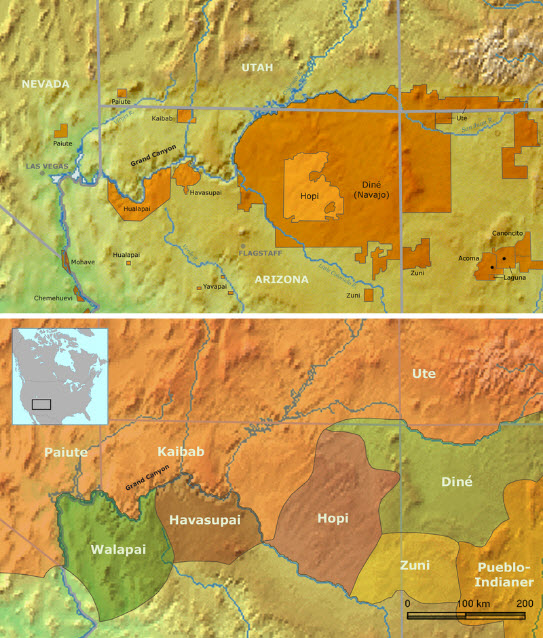Difference between revisions of "Tribal Resources"
Cellsworth (Talk | contribs) |
Cellsworth (Talk | contribs) |
||
| Line 95: | Line 95: | ||
'''2017''' | '''2017''' | ||
| − | |||
*[https://www.usbr.gov/uc/rm/amp/twg/mtgs/17jan26/AR7_Cannon.pdf Kinship on the Canyon: Hualapai Stories of Success PPT] | *[https://www.usbr.gov/uc/rm/amp/twg/mtgs/17jan26/AR7_Cannon.pdf Kinship on the Canyon: Hualapai Stories of Success PPT] | ||
'''2016''' | '''2016''' | ||
| − | |||
*[[Media:Parks, Petroglyphs, Fish, and Zuni DongoskeandHaysGilpin 2016 (2).pdf| Relating to Rock Art in The Contemporary World: Navigating Symbolism, Meaning, and Significance]] | *[[Media:Parks, Petroglyphs, Fish, and Zuni DongoskeandHaysGilpin 2016 (2).pdf| Relating to Rock Art in The Contemporary World: Navigating Symbolism, Meaning, and Significance]] | ||
*[http://www.usbr.gov/uc/rm/amp/amwg/mtgs/16aug24/Attach_09.pdf Tribal Liaison Report] | *[http://www.usbr.gov/uc/rm/amp/amwg/mtgs/16aug24/Attach_09.pdf Tribal Liaison Report] | ||
| Line 106: | Line 104: | ||
'''2015''' | '''2015''' | ||
*[https://drive.google.com/file/d/0BwY-Z2c3NTUGT1NaNlRGbXk2OU0/view Tribal Liaison Report] | *[https://drive.google.com/file/d/0BwY-Z2c3NTUGT1NaNlRGbXk2OU0/view Tribal Liaison Report] | ||
| − | |||
*[http://www.usbr.gov/uc/rm/amp/amwg/mtgs/15feb25/Attach_06.pdf Joint Tribal Liaison Report] | *[http://www.usbr.gov/uc/rm/amp/amwg/mtgs/15feb25/Attach_06.pdf Joint Tribal Liaison Report] | ||
*[http://www.usbr.gov/uc/rm/amp/twg/mtgs/15apr21/Attach_09b.pdf Southern Paiute Vegetation and Cultural Resource Monitoring Program] | *[http://www.usbr.gov/uc/rm/amp/twg/mtgs/15apr21/Attach_09b.pdf Southern Paiute Vegetation and Cultural Resource Monitoring Program] | ||
| − | |||
| − | |||
'''2014''' | '''2014''' | ||
| Line 125: | Line 120: | ||
*[http://www.usbr.gov/uc/rm/amp/amwg/mtgs/14feb19/Attach_09.pdf National Historic Preservation Act Update] | *[http://www.usbr.gov/uc/rm/amp/amwg/mtgs/14feb19/Attach_09.pdf National Historic Preservation Act Update] | ||
*[http://www.usbr.gov/uc/rm/amp/twg/mtgs/14jan30/Attach_07.pdf Cultural Resources Ad Hoc Group Report ] | *[http://www.usbr.gov/uc/rm/amp/twg/mtgs/14jan30/Attach_07.pdf Cultural Resources Ad Hoc Group Report ] | ||
| − | |||
'''2013''' | '''2013''' | ||
| − | |||
*[[Media:PricingtrainingpowerpointMarianneTribetwohourFINAL (1).pdf| USBR Presentation to tribes- May 9, 2013: When should a cost and/or price analysis be performed?]] [[Media:Handouts.zip| Support Material]] | *[[Media:PricingtrainingpowerpointMarianneTribetwohourFINAL (1).pdf| USBR Presentation to tribes- May 9, 2013: When should a cost and/or price analysis be performed?]] [[Media:Handouts.zip| Support Material]] | ||
| − | |||
| − | |||
|- | |- | ||
Revision as of 11:47, 21 February 2017
|
|
Tribal ResourcesThe lower reaches of Glen Canyon and the river corridor through Grand Canyon National Park, Arizona, have been used by humans for at least 13,000 years. Today, at least nine contemporary Native American Tribes claim traditional cultural ties to this area. Grand Canyon National Park contains more than 4,000 documented prehistoric and historic sites, and about 420 of these sites are located in proximity to the Colorado River. The lower reaches of Glen Canyon contain an additional 55 sites. In addition to archaeological sites, cultural resources along the Colorado River corridor include historic structures and other types of historic properties, as well as biological and physical resources that are of traditional cultural importance to Native American peoples such as springs, unique landforms, mineral deposits, native plant concentrations, and various animal species. Desired Future Condition for Cultural ResourcesPrehistoric Archaeological Sites and Historic Sites: Traditional Cultural Properties (TCPs):
|
| Tribal Ecological Knowledge |
Cultural Resources Library |
Tribal Perspectives |
|---|
